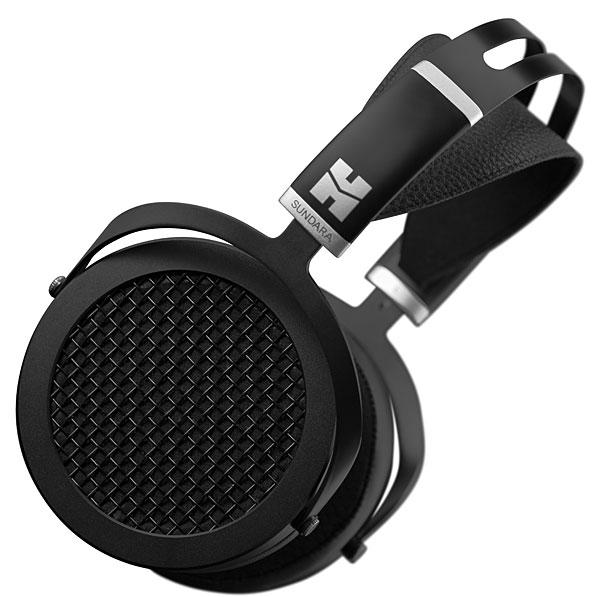HiFiMan Sundara Headphones

AT A GLANCE
Plus
Eighty percent thinner diaphragm
New HiFiMan aesthetic
Improved comfort
Minus
Can’t hush external noise
THE VERDICT
HiFiMan ups its game with Sundara’s new headband design that makes for a more comfortable fit and a new diaphragm that improves sound quality.
HiFiMan rocked my world back in 2009 with its revelatory HE-5 headphones. These were the first planar magnetic headphones I’d ever heard, and the sound was so clear and sweet, I’m pretty sure you’ll feel the same way about HiFiMan’s latest planar, the Sundara.
Before we go any further, you might be wondering how planar magnetic designs work. They use thin-film, flat diaphragms with a printed “voice coil” across most of their surface area, with magnets arrayed on the front and/or rear of the diaphragm. That’s radically different than standard dynamic headphones’ moving-coil drivers that are energized only from the edge of the diaphragm. When the signal’s current passes through a planar headphone’s flat conductors, it interacts with the magnets, which makes the diaphragm move. Unlike electrostatic headphones that must be used with dedicated amplifiers, Sundara, like all other planars, can be plugged into any amp with a standard headphone jack.
HiFiMan didn’t invent planar magnetic headphones. Yamaha, Fostex, and others were making planars in the mid 1970s, but that generation of planars was nearly extinct by the 1990s. Thanks to HiFiMan, Audeze, MrSpeakers, Oppo, and so many more, planars are now back in a big way and dominate the high-end headphone market—but HiFiMan took the lead in ’09.
Sundara looks and feels like a clean break from HiFiMan’s HE Series of headphones. First, the new aluminum and leather headband makes for a more comfortable fit; materials are upgraded for improved durability; and the new planar diaphragms, which are 80 percent thinner than the HE-400 Series’, promise improved sound quality. The round earpads aren’t as thick as some competing headphones, but Sundara’s comfort over long listening sessions was above par. The uncluttered lines give Sundara a more contemporary look than the HE-400 and HE-500 models.
The 3.5mm jacks on the aluminum earcups allow for easy cable swapping or upgrading to higher-end aftermarket cables, or balanced cables. Sundara’s 58-inch-long standard cable is terminated with a 3.5mm plug, and a 6.3mm adapter is included. The Sundaras sounded fine with my iPhone 6S, and better of course at home with an Audeze Deckard headphone amp.
Not all open-back headphones are equally open, so even before you start playing music, you can feel somewhat cut off from the outside world. That’s not the case with Sundara: You hear it all. That’s good for sound quality and wide-open imaging, but Sundara won’t hush outside noise one tiny bit.
With a recording with natural imaging like Ry Cooder’s A Meeting by the River album, Sundara brought me into the session. I was with the band, more so than I heard from HiFiMan’s HE-400i headphones. Sundara is a higher-resolution device, yet there’s no sense of exaggerated detail or presence. The HE-400i is no slouch, but it sounds unfocused and opaque after you get used to Sundara’s sound.
By chance, I’ve been listening to a lot of Elliot Smith’s music of late. His voice touched me first, then his jangly guitar, and lastly his words. Listening at hushed, late-night volume, Sundara pulled me deep into Smith’s emotionally naked music.
To finish, I popped on the newly revised Audeze LCD-2C planar magnetic headphones ($799), and they had a sweeter balance with electronica wizard Amon Tobin’s complex music. Still, the massively deep bass coursing through his Bricolage album was better defined over Sundara, while the LCD-2C’s low end felt a tad sluggish, and some of the electronic music’s texture was forfeited over the LCD-2C compared with the Sundara.
The HiFiMan Sundara feels like a recommitment to advancing the state of the art for $500 headphones. The bar has been raised!



























































